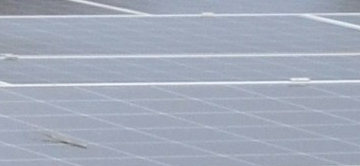The hydroelectric power plants installed on in France whose concession contract has expired are coveted by current or potential competitors of EDF and SHEM. While a competitive bidding process is in line with the European Commission's doctrine, it is not exclusively beneficial because it concerns the management of a common good: water.
Expired concessions
More than ten years ago, the European Commission asked the French government to open up hydroelectric concessions to competition when their contracts expired. As of December 31, 2020, this concerns 30 concessions with a total capacity of 2890 MW. To this will be added the 170 MW of 9 concessions during 2021, and the stock of expired contracts should reach the figure of 150 units (out of a total of 400) in 2023. Why the delay? Because where the European Commission sees essentially a tool for electricity production in competition with thermal, nuclear, wind and solar production units, French political staff, especially that of local authorities, reminds us that water is a scarce resource which, after turbining, will also be used for agriculture, low water support, recreational uses and all household and industrial needs. In view of these subsequent uses of water, some people reject the very idea of putting the power plants that control the release of water further upstream in competition with each other and ask that the historical operators be renewed in their missions. Others are open to this idea providing that incumbents are involved in the contract award process. In both cases, we are far from the view of the European Commission, which considers that EDF's dominant position on the French market is not compatible with free competition. From law to law, the problem is raised but remains unresolved. The report of the Cour des Comptes for the year 2020 gives the history of the dispute between France and the European Commission.
Internal and external efficiency
Regardless of how the sector is organized, water uses other than electricity generation may be subject to regulatory obligations or market exchanges (see the Wat€r Mu$ic post). In what follows, we investigate the pros and cons of putting hydroelectric plants up for competition from a purely economic point of view. The specificity of this activity lies in its main production factor, water, which combined with gravity, generates the energy that produces electricity. Water is not traded like gas, coal or oil. Property rights to the resource are not always well defined. And even when they are, because of prohibitive transportation costs, transactions in water markets are constrained by the watershed structure.
To make a profit, firms produce as long as the cost is below the price at which they sell. But for all destocking activities (we leave aside pumping stations here) the difficulty lies in estimating the cost. The cost of releasing water today is the gain that the water will not be able to provide tomorrow, so the price of tomorrow's MWh. This price depends on what the other producers will do, and therefore, among other things, on the height of the water stock in their respective dams. If two dams are operated by independent entities, they have no incentive to internalize the negative effects of their management on each other's production. This lack of coordination creates an internal inefficiency that disappears once the two dams are under the control of the same operator. But, as a 2004 article shows, the gains from grouping the management centers must be weighed against the market power of a single operator, and thus the loss in external efficiency. There is no clear advantage in favor of competition between dams rather than consolidation. On the other hand, if the single operator is a public firm managed or regulated in the public interest and not an operator seeking to extract maximum profit, the coordination gains obviously prevail.
Cascade hydropower
But the difficulties do not end there. Some countries have dams that generate electricity along the same river. As a result, the downstream reservoirs are dependent on water releases from the upstream operators to fill them. This configuration gives the upstream power plants special market power. In the jargon of game theory, we say that they are Stackelberg leaders. But they are in a unique position because every time they turbine water to produce electricity, they provide the downstream plants with the opportunity to compete with them in subsequent markets, which can be an important advantage in times of drought. Thus, they have a dual incentive to reduce their output below optimal volumes: to raise the price of energy today and not to increase the resources of their downstream competitors for subsequent day markets. To reduce the risk of opportunism arising from this configuration, these dams are generally not operated by operators independent of each other (unless, of course, they are located in different countries). In Brazil, the Rio Grande and Parana power plants are centrally managed, in Quebec all the dams on the La Grande Rivière are publicly owned, in New Zealand all the power plants located on the same river have the same owner (source).
Back to the French case, the problem is complicated by the fact that if the cascade dams were not built at the same time, their concession contracts do not end at the same time. To put these contracts out to tender as they expire would therefore run the risk of seeing concessions located on the same river awarded to different operators. The solution chosen is that of the "barycenters": a common maturity date is "calculated in such a way that the sum of the estimated future cash flows of the concessions, discounted and calculated for all the concessions grouped together, is not modified by their grouping" (Energy Code, Article L. 521-16). This method makes it possible to postpone the first deadlines. Thus, for the Dordogne development concession (operated by SHEM), whose first equipment dates from 1921 and the most recent from 1988, the new due date is December 31, 2048 (Decree No. 2019-212 of March 20, 2019). But there is a condition: if, on December 31, 2024, some work has not been committed (the total set is about 50 million euros for the Dordogne), the new common date will be advanced in proportion to the work not done. The exact formula is given in Article 2 of the decree. In the absence of any capital expenditure, the deadline is brought forward to 31 December 2035. If there is competition, it will not be between dams located on the same river. But we see the disadvantage of this method. The company that wins this type of lot will benefit from a market power equivalent to that which independent companies forming a cartel would achieve. We thus find the same arbitration as for dams on separate rivers.
* *
*
The systematic promotion of competition that has been the European policy mantra is now clashing with environmental concerns. Markets and environmental protection are not incompatible, provided that the missions of regulatory agencies, in particular the six “Agences de l’eau” in France, are strengthened. The arm wrestling between the French and EU authorities over hydropower plants is just one of the avatars of this conflict of priorities. But market failures go beyond environmental considerations. In strictly economic terms, competition does not allow for optimal coordination of reservoir management. Control of water effectively gives power to energy companies that can use it to extract more profit at the expense of consumers. Evaluating the advantages and disadvantages of competition when it comes to managing high altitude reservoirs is more difficult than when competition involved the entry of combined cycle thermal power plants. In the end, the choice will obviously be political.





